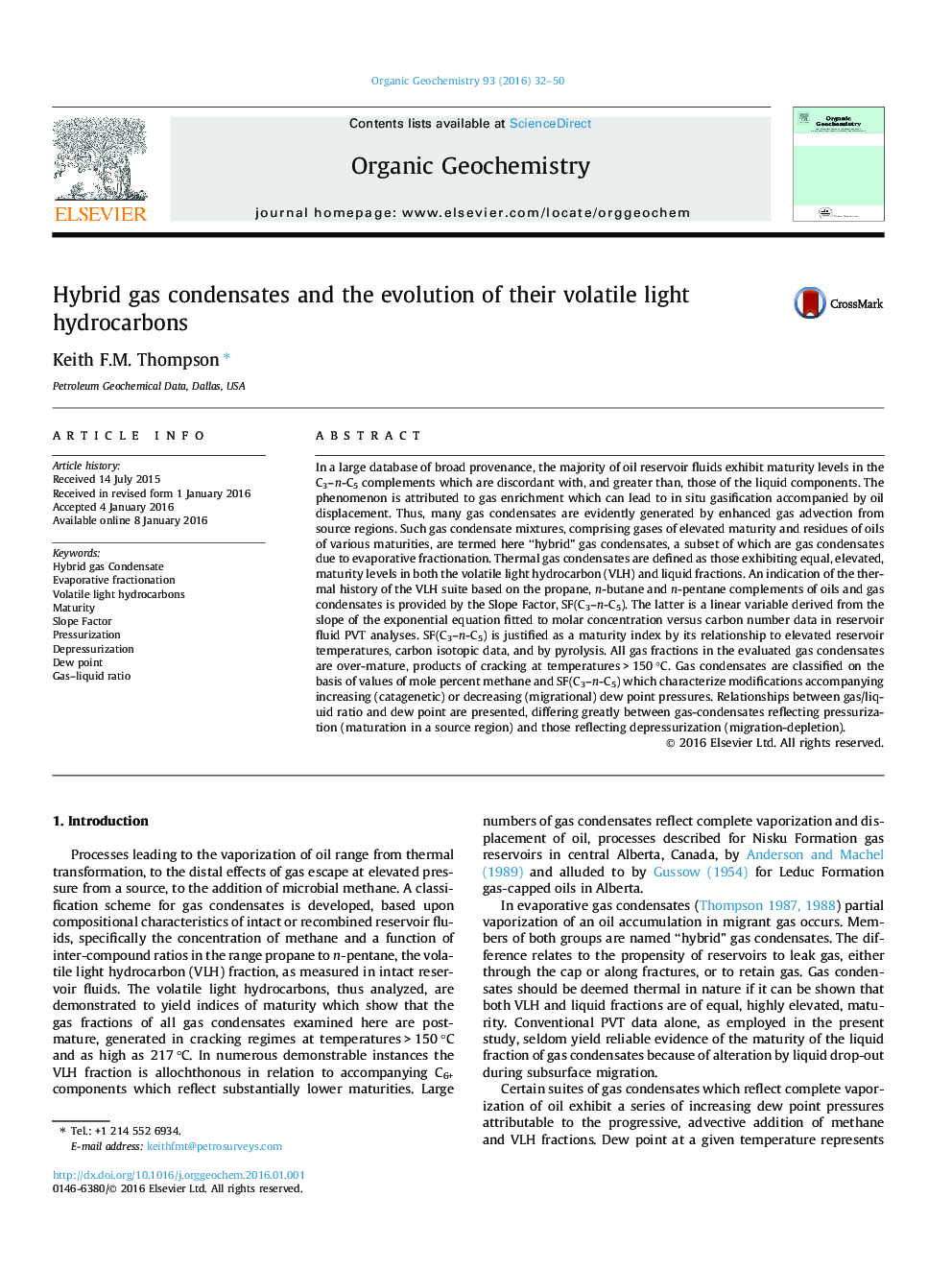| Article ID | Journal | Published Year | Pages | File Type |
|---|---|---|---|---|
| 5162521 | Organic Geochemistry | 2016 | 19 Pages |
Abstract
In a large database of broad provenance, the majority of oil reservoir fluids exhibit maturity levels in the C3-n-C5 complements which are discordant with, and greater than, those of the liquid components. The phenomenon is attributed to gas enrichment which can lead to in situ gasification accompanied by oil displacement. Thus, many gas condensates are evidently generated by enhanced gas advection from source regions. Such gas condensate mixtures, comprising gases of elevated maturity and residues of oils of various maturities, are termed here “hybrid” gas condensates, a subset of which are gas condensates due to evaporative fractionation. Thermal gas condensates are defined as those exhibiting equal, elevated, maturity levels in both the volatile light hydrocarbon (VLH) and liquid fractions. An indication of the thermal history of the VLH suite based on the propane, n-butane and n-pentane complements of oils and gas condensates is provided by the Slope Factor, SF(C3-n-C5). The latter is a linear variable derived from the slope of the exponential equation fitted to molar concentration versus carbon number data in reservoir fluid PVT analyses. SF(C3-n-C5) is justified as a maturity index by its relationship to elevated reservoir temperatures, carbon isotopic data, and by pyrolysis. All gas fractions in the evaluated gas condensates are over-mature, products of cracking at temperatures > 150 °C. Gas condensates are classified on the basis of values of mole percent methane and SF(C3-n-C5) which characterize modifications accompanying increasing (catagenetic) or decreasing (migrational) dew point pressures. Relationships between gas/liquid ratio and dew point are presented, differing greatly between gas-condensates reflecting pressurization (maturation in a source region) and those reflecting depressurization (migration-depletion).
Related Topics
Physical Sciences and Engineering
Chemistry
Organic Chemistry
Authors
Keith F.M. Thompson,
